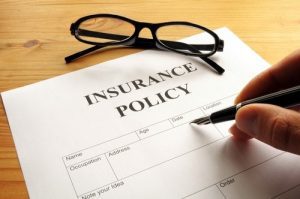 A previous article discussed questions to ask before purchasing life insurance.
A previous article discussed questions to ask before purchasing life insurance.
Now we continue the conversation to discuss the questions and decisions that come into play during the application process. Most of these questions are only relevant to whole life insurance and may not apply to other types of life insurance, especially types with little or no cash value, or that do not guarantee the death benefit permanently. And these are questions that we can help you answer!
How much life insurance should you get?
“Needs analysis” is a common way to determine how much life insurance to purchase. It can provide insights, such as ensuring you obtain adequate amounts to pay off a mortgage or replace a breadwinner’s income. However, it’s not the only thing to consider.
Here is a great analogy: Let’s say you live in a beautiful five-bedroom, three bath home on the ocean and the house burns to the ground. Would you want home insurance to replace your full loss or simply want to cover your “need” for shelter? Of course, you’d want insurance that would replace your home’s full value!
That’s why we recommend that clients ensure their full Human Life Value instead. Human Life Value (HLV) is a financial term that indicates how a person’s monetary “worth” is measured for the purpose of life insurance and also wrongful death lawsuits. HLV helps you assess and protect the full financial loss your family would incur if you were to die today. Your HLV could be $2 million, but a “needs analysis” may only indicate a “need” of $200k of coverage. That is a big difference in the true amount of coverage needed.
Since few people can ensure their Human Life Value with one whole life policy, many people will have multiple policies, both term insurance (preferably that can be convertible to whole life) and whole life. Your HLV is the upper limit of what you can apply for, and the amount of life insurance you actually obtain is largely a function of cash flow. Premium payments should be high enough to help you satisfy your savings goals—assuming building cash value and liquidity is one of your aims—but not more than you can afford. (You can also apply for a higher amount while deciding and crunching numbers, and settle on a policy for less than the approved amount.)
Will I qualify for life insurance?
There is only one way to know for sure, and that is to apply! We can give you some guidelines and advice: for instance, if you just underwent cancer treatment, you might have trouble getting a policy. With other health conditions, there may be policies that will be a great fit although you may pay more than someone with excellent health.
Is the policy structured for maximum Cash Value or maximum Death Benefit?
 Most people choose to maximize for cash value, which means maximizing Paid-Up Addition (PUA) riders. This accelerates the build-up of cash value within a whole life policy. If your goal is to store cash and increase liquidity, you will definitely want maximum PUAs!
Most people choose to maximize for cash value, which means maximizing Paid-Up Addition (PUA) riders. This accelerates the build-up of cash value within a whole life policy. If your goal is to store cash and increase liquidity, you will definitely want maximum PUAs!
Some people prefer to maximize the death benefit instead. Perhaps you already have policies or other assets with ample cash value, and your goal is to increase the worth of your estate rather than expand your own cash and liquidity. In that case, the policy can be structured for a larger permanent death benefit and slower cash value accumulation.
If you wish to be able to vary how much you put into a policy via PUAs, ask if the policy will allow for that flexibility.
What is the interest rate charged for a policy loan?
The ability to borrow against your policy is a primary benefit of having cash value. You can access cash within about a week, and there’s no income or credit check. Some banks will lend you money with your cash value as collateral, often at more favorable interest rates, which gives you two ways to borrow against your cash value.
Is there a Waiver of Premium rider on the policy?
Waiver of premium is a rider or clause in an insurance policy that would waive your obligation to pay any further premiums should you become disabled. In this way, your policy would continue to save FOR you, while also building your death benefit, even if you could no longer work. The rider may require the insured to be disabled for a certain amount of time, such as six months, and some companies may also place qualifying requirements on the policyholder, such as being in good health or below a certain age.
There is an extra charge for this rider, which varies according to the size of the policy, age, and other factors. We can show you how this and other riders will affect the cost or potential performance of your policy.
Is there a Terminal Illness rider available on the policy?
 A terminal Illness rider is an optional rider that allows the policyholder to “accelerate” all or part of the death benefit upon diagnosis of a terminal illness when the insured is not expected to live beyond a certain time frame (such as 12 months). This rider allows the insured to literally “spend their death benefit while living,” which can help them pay medical bills, settle their affairs, obtain alternative treatments, travel if they are able, and gift or spend money in ways that are meaningful to them.
A terminal Illness rider is an optional rider that allows the policyholder to “accelerate” all or part of the death benefit upon diagnosis of a terminal illness when the insured is not expected to live beyond a certain time frame (such as 12 months). This rider allows the insured to literally “spend their death benefit while living,” which can help them pay medical bills, settle their affairs, obtain alternative treatments, travel if they are able, and gift or spend money in ways that are meaningful to them.
There may be an additional charge for this benefit, although it may be provided at no extra cost from certain companies, which makes it a “no brainer!”
Should you backdate your life insurance policy?
Backdating a policy six months is a great way to jumpstart your policy’s cash value more quickly, as you’ll pay the second year six months after the policy begins. It may also “backdate” your age, which could have a slight advantage.
If your goal is accelerating cash value and if making two annual payments within six months is no problem, this could be worth considering. We can help you compare the options.
Will you pay for the policy annually or monthly?
There is generally also a quarterly option, although most people prefer annually or monthly. It costs a bit extra to do monthly (we can give you the comparison), but if monthly works best for your cash flow, you should do what works for your situation. You can always have the company change your payment plan down the road.
Decisions, Decisions!
As you can see, there are a lot of decisions to make when getting life insurance! Don’t worry… It’s what we do every day and we will walk you through it, which makes it SO much easier!
Just remember—the most important decision to make about life insurance is the first one… the decision to begin the process. To get started, reach out to us today at hello@NeeserInsurance.com or give us a call at 574-234-1980.
© ProsperityEconomicsMovement

